Henri-Edmond Cross
The co-incidences in life are amazing, aren’t they! You may recall a recent post called Monet and Friends Alive, which was an immersive art installation at The Lume, in Melbourne Australia. The work of Henri-Edmond Cross was featured amongst the Impressionists. I hadn’t ever heard of him, so I decided to find out a bit more.
Completely separately to that, Anne has recently written about contemporary artist Phillip de Kraan, and revisited my earlier posts on the Neo-Impressionist, Georges Seurat. It turns out that all these artists work in a similar style, using divisionism, and the dot-like technique of pointillism. What a co-incidence!
So, read on to learn a little about Henri-Edmond Cross…..
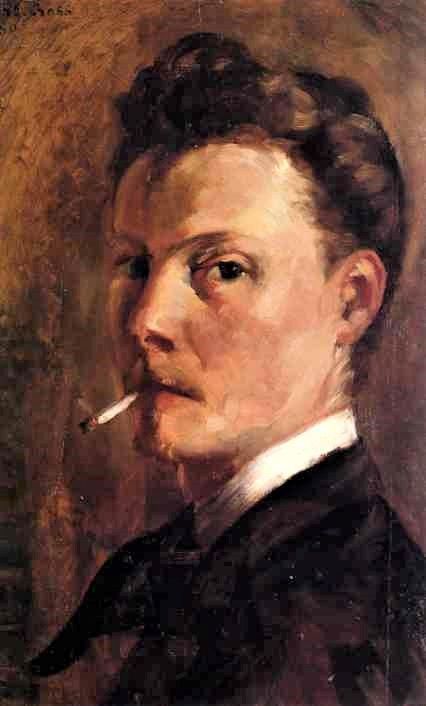
Henri Edmond Cross (1856 - 1910) was a French painter and printmaker. He is most well-known as an exponent of Neo-Impressionism. This was a late 19th-century movement in French painting which aimed to improve on the principles of Impressionism through a scientific approach to form and colour, particularly using the pointillist technique of bright colours and short brush strokes or even dots. The movement's leading figures included Georges Seurat, Paul Signac, and Camille Pissarro, all of whom we have featured on the blog before.
Henri-Edmond Cross was born as Henri-Edmond-Joseph Delacroix in Douai, in northern France, on 20 May 1856. His father was French and his mother was British, and he had no surviving brothers and sisters.
In 1865 the family moved to a town near Lille, a northern French city close to the Belgian border. A cousin of his father, Dr. Auguste Soins, recognized and supported Henri's artistic talent and financed the boy's first drawing lessons. Henri went on to study at the École des Beaux-Arts in Paris. Here he learnt about many artists, including the famous Romantic painter Eugène Delacroix, who had the same surname as himself. So as not to be confused with this artist, Henri changed his name in 1881, shortening and Anglicizing his name to "Henri Cross" (the French word croix means cross).
His early works, portraits and still lifes, were in the dark colors of realism, but after meeting with Claude Monet in 1883, he gradually began painting in the brighter colours of Impressionism and working outside “en plein air".
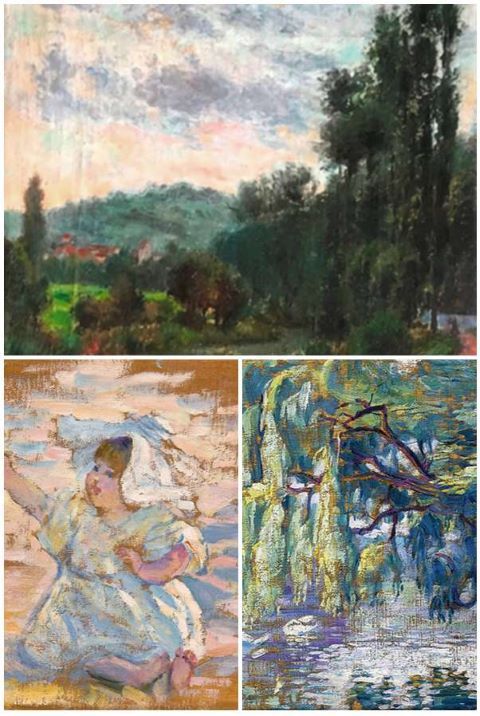
He later met Georges Seurat and Paul Signac, who were close friends and associates. In 1884, Henri Cross co-founded the Société des Artistes Indépendants with Georges Seurat. Despite his association with the Neo-Impressionists, Cross did not adopt their pointisilst style for many years. His work continued to reflect influences such as Jules Bastien-Lepage and Édouard Manet, Claude Monet and Camille Pissarro. In about 1886, he again changed his name as there was another French artist with a similar name - Henri Cros. So he amended his name to "Henri-Edmond Cross," which he was known as for the rest of his life.
In 1891 Cross began painting in the Neo-Impressionist style. I wonder if this was perhaps as a result of the early death of his pioneering friend, Georges Seurat, on 29th March 1891, at only age 31?
Cross exhibited his first large piece using this technique in an Indépendants show. That painting was a divisionist portrait of Madame Hector France, née Irma Clare, whom Cross had met in 1888 and would marry in 1893. Robert Rosenblum wrote that "the picture is softly charged with a granular, atmospheric glow". 1
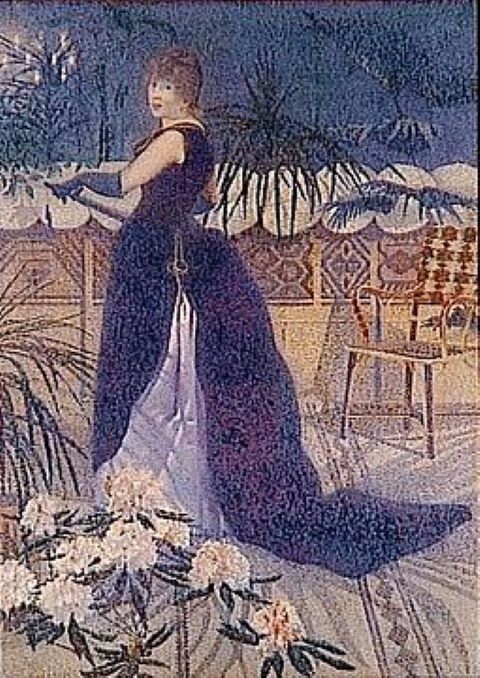
Cross's paintings of the early- to mid-1890s are characteristically Pointillist, with closely and regularly positioned tiny dots of colour, but he found this technique very time consuming and frustrating.
From around 1895, he gradually shifted his technique to using broad, blocky brushstrokes and further, to leaving small areas of exposed bare canvas between the strokes. This made his work look like mosaics. These paintings may be seen as precursors to Fauvism and Cubism, and greatly influenced artists such as Henri Matisse, Albert Marquet, and Jean Puy.
Take note of the brushstrokes used in the following examples of his work. Aren't they beautiful and harmonious?
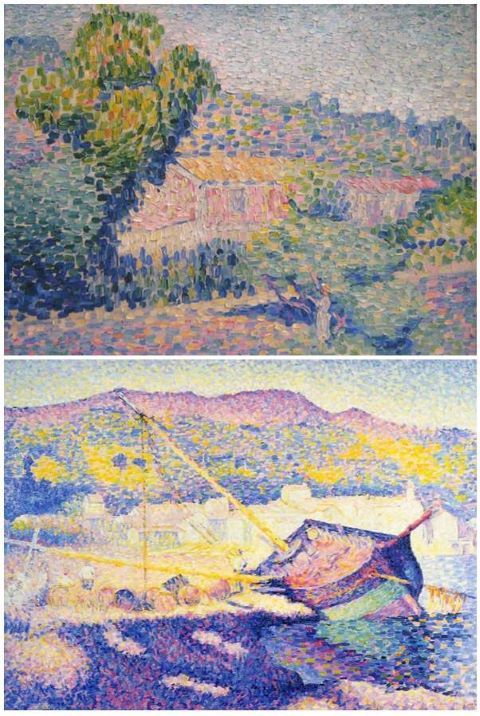
Can you spot the differences in the evolution of his techniques, below?
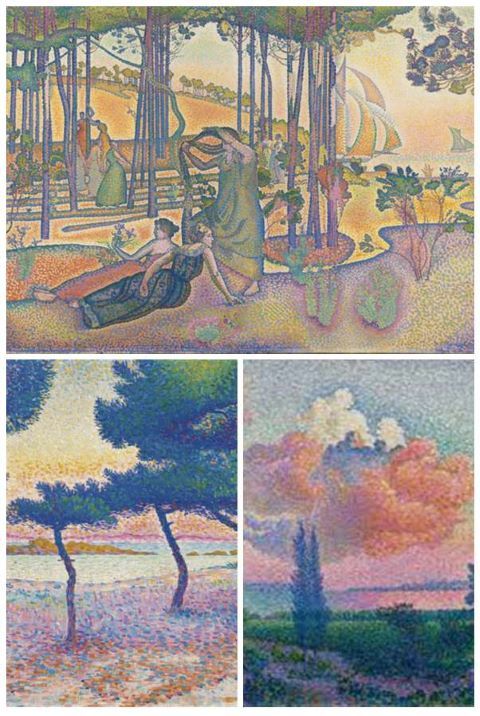
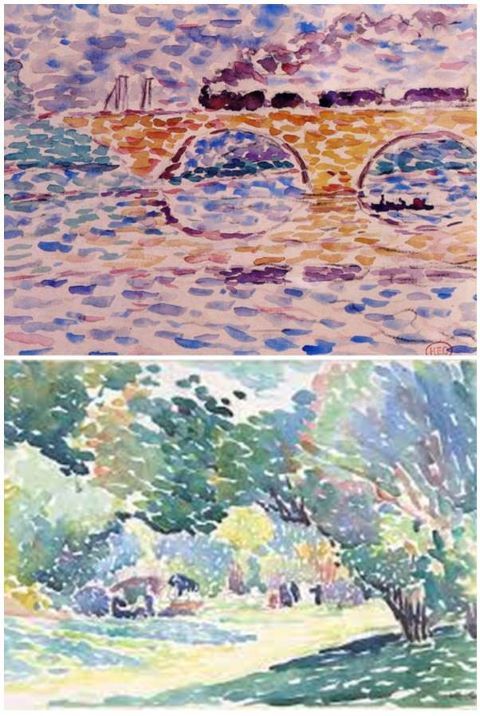
Cross used to spend the winter months in the south of France from the mid-1880’s. But when he began suffering acutely from arthritis and rheumatism, he finally moved there permanently in 1891, settling in the small town of Saint-Clair, where he was based for the rest of his life.
In 1892, a year after Seurat’s death, Paul Signac moved to nearby Saint-Tropez. Paul Signac was Georges Seurat’s closest friend, and together they had pioneered the new divisionism and pointilist techniques. I am sure Signac would have been devastated and feeling very lost without his close friend, and so gravitated to Henri-Edmond Cross in his loss. Together they continued Seurat’s legacy in refining the style. They frequently hosted gatherings in Cross's garden at St. Clair, attended by artists including Henri Matisse, André Derain, and Albert Marquet.1
I couldn’t find any information about Henri-Edmond's wife, or whether they had any children. Given this lack of information, it seems they probably didn’t. I particularly like this beautiful portrait of Madame Cross, though, it somehow seems to say to me that they had a good relationship….
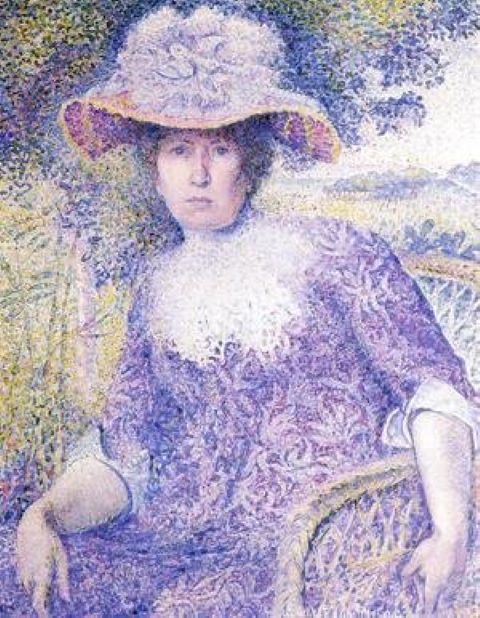
Henri-Edmond Cross travelled to Italy in 1903 and 1908, and to Paris for his annual Indépendants exhibits, but in 1909, was diagnosed with cancer. Sadly, he died in Saint-Clair on 16th May 1910. However, in his last years he was productive and very creative, and his work was featured in significant solo exhibitions. He had the joy of receiving great acclaim from critics and enjoying commercial success before he died.
You may like to browse through a comprehensive portfolio of his work by clicking here.
Footnotes
- With thanks to Wikipedia
